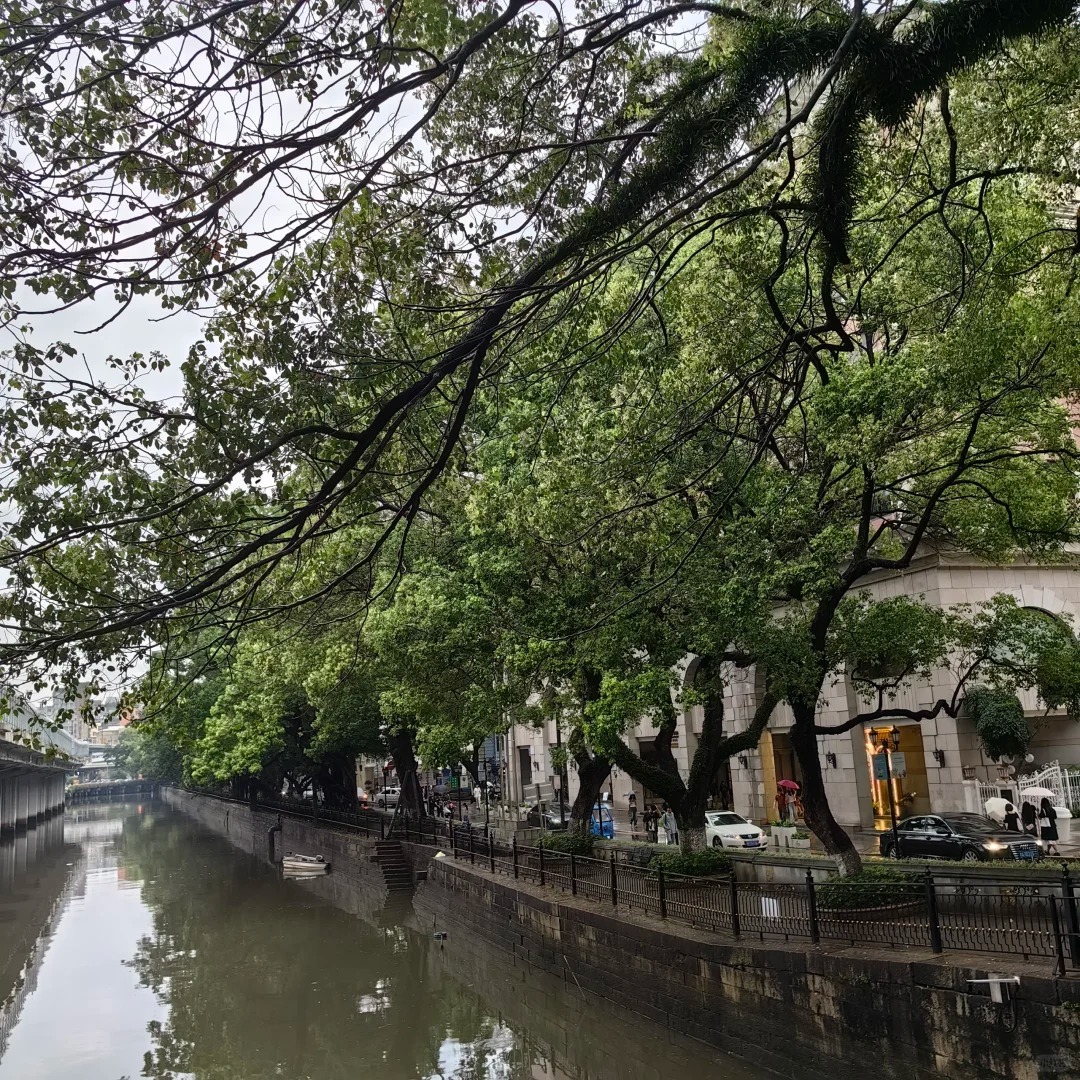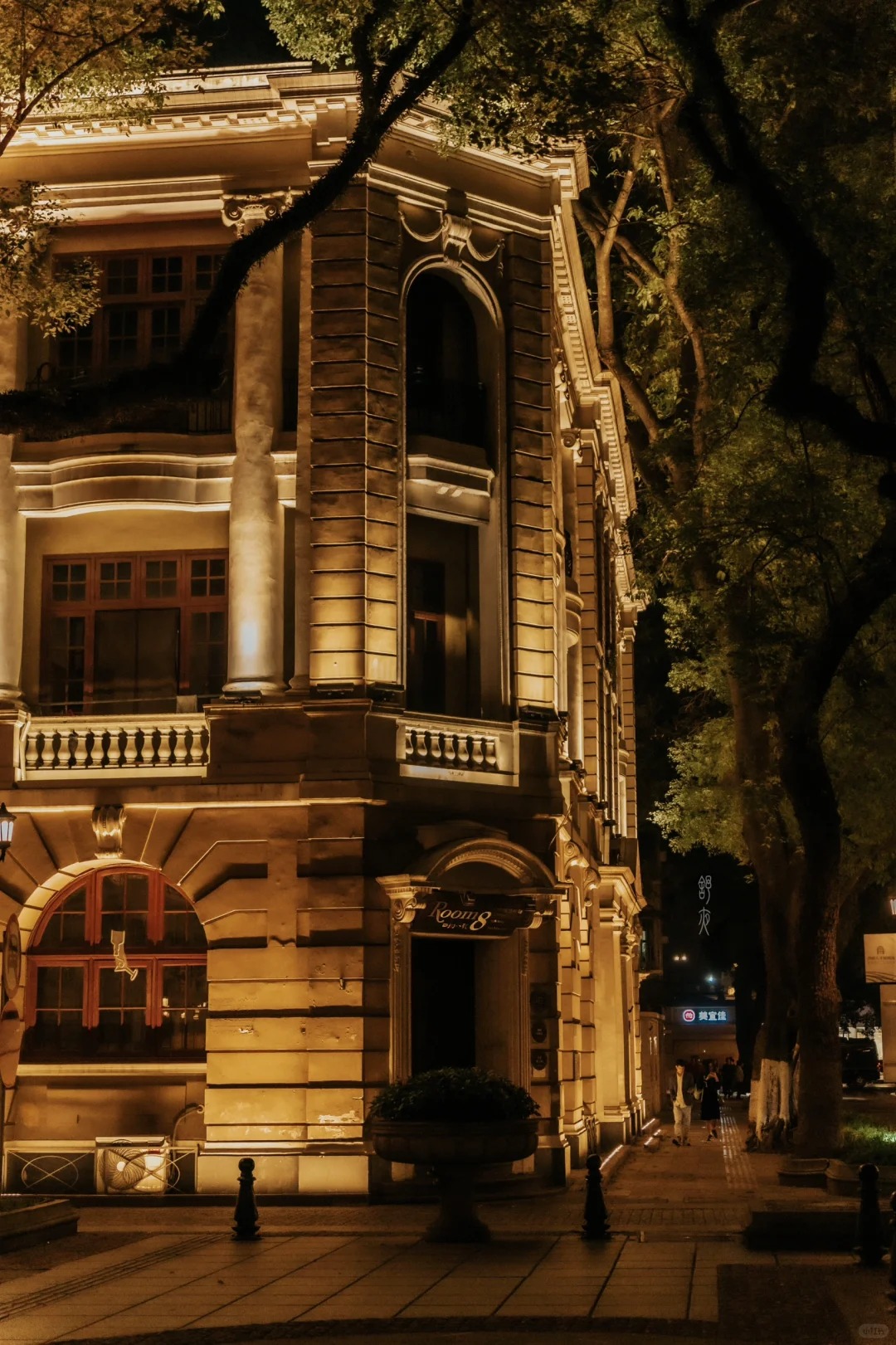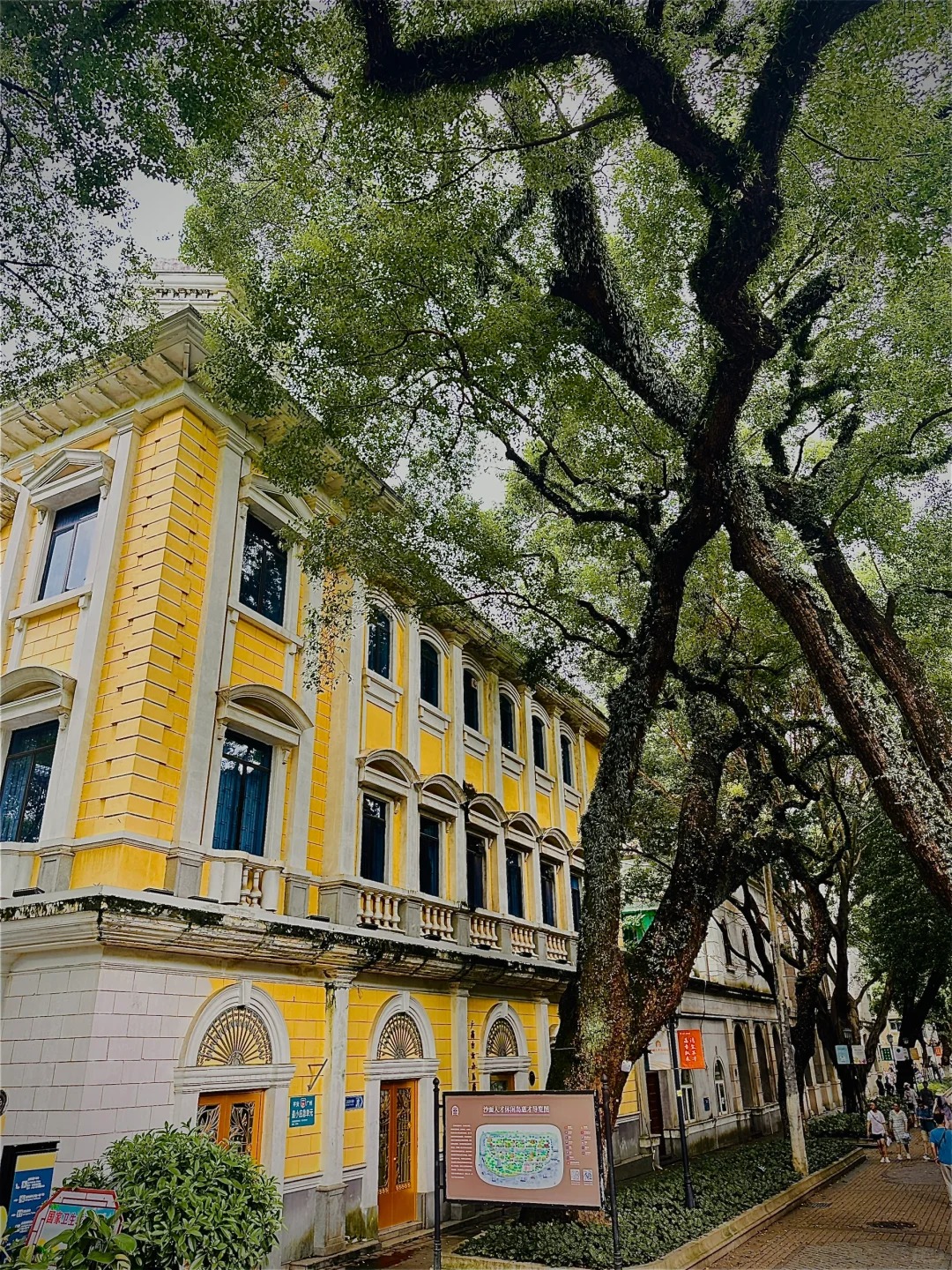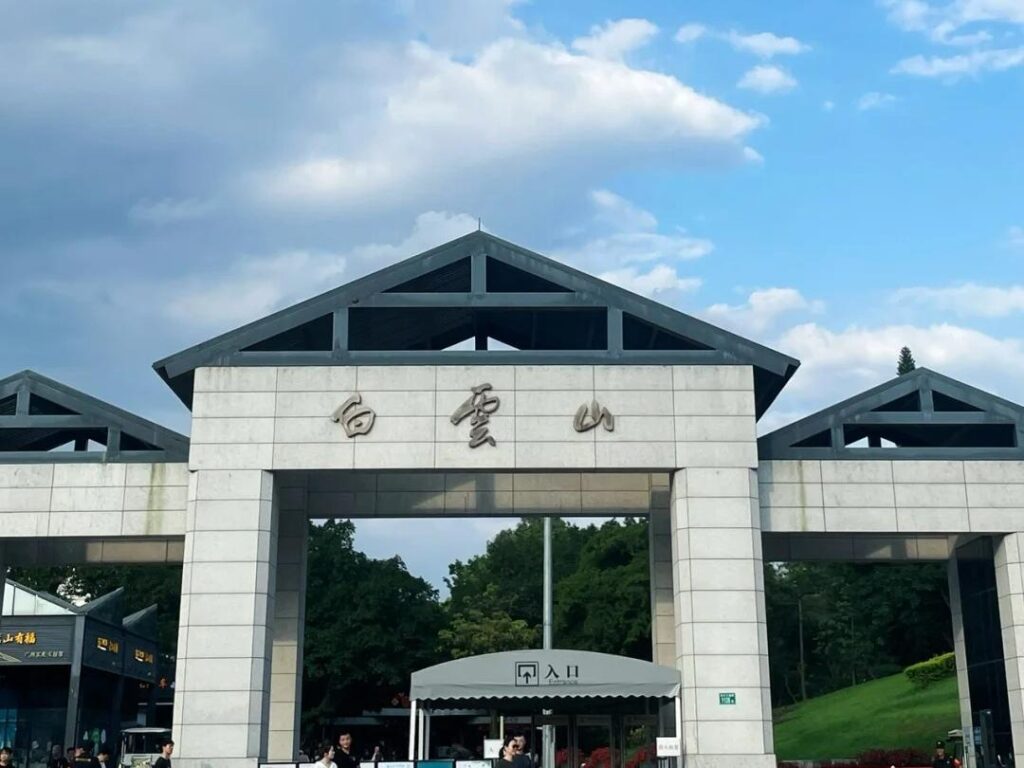Visiting Information
| Information | Details |
|---|---|
| Chinese Name | 沙面岛 (Shāmiàn Dǎo) |
| Location and Address | Liwan District, Guangzhou City, Guangdong Province, China |
| Opening Time/Hours | Open 24 hours (public areas) |
| Entrance Fee | Free |
| How to Get There | By Metro: Take Line 1 to Huangsha Station, then walk about 10 minutes By Bus: Take bus 9, 31, 57, 81, 85, 88, 123, or 209 to Shamian Station By Taxi: Tell the driver to go to Shamian Island (沙面岛) |
| Best Time for Visit | October to April (cooler and drier months) |
| Contact Info | Shamian Street Office: Phone: +86 20 8121 8484 Email: Not available |
Overview
Shamian Island is a sandbar island in the Liwan District of Guangzhou, Guangdong Province, China. Covering an area of 0.3 square kilometers, this historic island is renowned for its well-preserved colonial architecture, tree-lined avenues, and tranquil atmosphere. Once a crucial foreign enclave and trading post, Shamian Island now serves as a popular tourist destination, offering visitors a unique glimpse into Guangzhou’s colonial past and a peaceful retreat from the bustling metropolis.
Historical Background
Shamian Island’s history as a foreign concession dates back to the mid-19th century. Following the Second Opium War, the island was divided between the British and French in 1859. It quickly became a strategic point for foreign trade and residence in Guangzhou. The island was developed with Western-style buildings, churches, and wide, tree-lined avenues, creating a distinctly European enclave in the heart of southern China. After the founding of the People’s Republic of China in 1949, the island’s role as a foreign concession ended, but its unique architectural heritage remained largely intact. In recent decades, Shamian Island has undergone restoration efforts to preserve its historical significance and has become a protected historical and cultural area, attracting both domestic and international tourists interested in its colonial past and architectural beauty.

Architectural Features
- Colonial Buildings: Shamian Island boasts a remarkable collection of colonial-era architecture, primarily in the Neoclassical and Baroque styles. These buildings, constructed in the late 19th and early 20th centuries, feature distinctive elements such as colonnades, pediments, and ornate facades. Many of these structures once served as consulates, banks, trading houses, and residences for foreign merchants. Today, they house hotels, restaurants, art galleries, and government offices, offering visitors a vivid glimpse into the island’s colonial past.
- Our Lady of Lourdes Chapel: This Catholic church, built in 1892, is a prime example of Gothic Revival architecture on the island. The chapel features pointed arches, a rose window, and twin spires, standing out as one of the most iconic structures on Shamian. Its presence reflects the religious freedom granted to foreign residents during the concession period and continues to serve as an active place of worship.
- Former British Consulate: This impressive building, constructed in 1865, is one of the oldest structures on the island. It showcases classic British colonial architecture with its symmetrical design, large windows, and columned entrance. The building now houses the Guangdong Gallery and serves as a reminder of the island’s diplomatic history.
- Tree-Lined Avenues: While not buildings, the wide, tree-lined avenues of Shamian Island are an essential architectural feature of its urban planning. These streets, reminiscent of European boulevards, are flanked by banyan trees that create a green canopy, offering shade and contributing to the island’s tranquil atmosphere. The layout of these avenues reflects the Western urban planning principles of the time and provides a stark contrast to the narrow streets typical of traditional Chinese cities.
Cultural Importance
Shamian Island holds significant cultural importance as a unique historical enclave that represents a pivotal period in China’s interaction with the West. It serves as a physical reminder of the complex history of foreign influence and trade in Guangzhou, once China’s only port open to foreign commerce. The island’s well-preserved colonial architecture provides a tangible link to the past, allowing visitors and locals alike to experience a slice of history firsthand. Moreover, Shamian Island has become a symbol of cultural fusion, where Eastern and Western influences blend in architecture, lifestyle, and atmosphere. Today, it plays a crucial role in Guangzhou’s cultural landscape, hosting art exhibitions, cultural events, and serving as a popular location for wedding photography, further cementing its place in contemporary Chinese culture. The island’s tranquil environment, contrasting with the bustling modernity of Guangzhou, also makes it a valued urban oasis and a testament to the importance of preserving historical heritage in rapidly developing cities.
Surrounding Attractions
- Chen Clan Ancestral Hall: Located about 3 kilometers east of Shamian Island, the Chen Clan Ancestral Hall is a magnificent example of traditional Lingnan architecture. Built in the late 19th century, this expansive complex served as both an ancestral temple and an academy for the Chen clan. Today, it houses the Guangdong Folk Art Museum, showcasing a wide array of traditional arts and crafts from the region. Visitors can admire intricate wood and stone carvings, colorful pottery, and elaborate decorations throughout the complex, offering a stark contrast to the Western-style architecture of Shamian Island.
- Liwan Lake Park: Situated about 1.5 kilometers northwest of Shamian Island, Liwan Lake Park is a large urban park that offers a refreshing green space in the heart of Guangzhou. The park features a beautiful lake, traditional Chinese gardens, and several historical buildings. It’s a popular spot for locals to practice tai chi, enjoy boat rides, or simply relax. The park also includes the Xiguan House of Guangzhou, a museum showcasing the traditional lifestyle of the Xiguan area, providing visitors with insights into local history and culture.
- Qingping Market: Located just across the canal from Shamian Island, Qingping Market is one of the largest traditional markets in Guangzhou. Known for its diverse array of herbs used in traditional Chinese medicine, the market also offers fresh produce, live animals, and various local specialties. While it might be overwhelming for some visitors due to its bustling atmosphere and exotic offerings, it provides an authentic glimpse into local life and traditional commerce in Guangzhou, contrasting sharply with the serene environment of Shamian Island.
- Pearl River Cruise: While not a specific location, taking a Pearl River cruise is a popular activity that complements a visit to Shamian Island. The cruise typically starts from nearby wharfs and takes visitors along the Pearl River, offering stunning views of Guangzhou’s modern skyline, historic buildings, and illuminated bridges. It’s particularly beautiful in the evening when the city lights create a dazzling display. The cruise provides a different perspective of the city and helps visitors understand Shamian Island’s strategic location along this historically important waterway.

Photography Opportunities
- Colonial Architecture: Shamian Island’s well-preserved colonial buildings offer endless opportunities for architectural photography. The intricate details of Neoclassical and Baroque facades, ornate balconies, and grand entrances provide excellent subjects for both wide-angle and close-up shots. The contrast between these Western-style buildings and the surrounding Chinese urban landscape creates visually striking compositions. Early morning or late afternoon light can enhance the textures and shadows of these historical structures, adding depth to the photographs.
- Tree-Lined Avenues: The island’s wide, tree-lined streets offer picturesque scenes reminiscent of European boulevards. The canopy created by mature banyan trees provides beautiful dappled light effects, especially during sunny days. These avenues are particularly photogenic in autumn when fallen leaves carpet the ground. Photographers can capture the interplay of light and shadow, as well as the sense of tranquility these streets impart. Including people strolling or cycling along these avenues can add a sense of scale and life to the images.
- Waterfront Views: The island’s location along the Pearl River presents opportunities for stunning waterfront photography. From the southern promenade, photographers can capture panoramic views of the river, with modern Guangzhou as a backdrop. This juxtaposition of historical island foreground with the contemporary cityscape background can create compelling images, especially during golden hour or at night when the city lights reflect on the water. Long exposure techniques can be used to smooth the water and create dreamy, ethereal effects.
- Street Life and Details: Beyond the grand architecture, Shamian Island offers numerous opportunities for street photography and capturing small details. The island’s relaxed atmosphere draws locals and tourists alike, providing chances to photograph people engaged in tai chi, artists at work, or couples taking wedding photos. Close-up shots of architectural details, such as door knockers, window frames, or street lamps, can reveal the island’s character in a more intimate way. The many statues and sculptures scattered around the island also make for interesting photographic subjects, especially when framed by the surrounding historical buildings.
Modern Importance
- Cultural Heritage Preservation: Shamian Island serves as a model for cultural heritage preservation in modern China. As rapid urban development continues to transform Chinese cities, Shamian stands out as a successfully preserved historical area. Its well-maintained colonial architecture and overall historical ambiance demonstrate how urban planners and policymakers can balance modernization with the preservation of cultural heritage. The island’s protected status and ongoing restoration efforts highlight China’s growing awareness of the importance of preserving historical sites, not just for tourism, but as tangible links to the past that enrich the cultural fabric of modern cities.
- Tourism and Economic Impact: In the modern context, Shamian Island has become a significant tourist attraction, contributing to Guangzhou’s tourism industry and local economy. The island draws both domestic and international visitors, supporting local businesses such as hotels, restaurants, cafes, and art galleries. This influx of tourists not only brings economic benefits but also promotes cultural exchange and enhances Guangzhou’s image as a city with rich historical and cultural offerings. The island’s popularity as a tourist destination has led to the development of supporting infrastructure and services, creating jobs and economic opportunities for local residents.
- Urban Green Space and Quality of Life: In the context of modern urban development, Shamian Island plays a crucial role as a green oasis within the bustling metropolis of Guangzhou. Its tree-lined avenues, parks, and waterfront areas provide much-needed open spaces for relaxation and recreation. This contributes significantly to the quality of life for both residents and visitors, offering a peaceful retreat from the fast-paced urban environment. The island’s role in providing urban green space aligns with contemporary urban planning principles that emphasize the importance of accessible, high-quality public spaces in promoting community well-being and environmental sustainability.
- Educational and Cultural Resource: Shamian Island serves as an important educational and cultural resource in modern times. Its well-preserved colonial architecture and historical significance make it an outdoor museum of sorts, offering tangible insights into Guangzhou’s colonial past and China’s historical interactions with the West. Schools often organize field trips to the island, and it serves as a site for historical and architectural studies. Furthermore, the island hosts various cultural events, art exhibitions, and performances, contributing to Guangzhou’s contemporary cultural scene. This blend of historical education and modern cultural activities makes Shamian Island a unique bridge between past and present, enriching the cultural life of the city and its inhabitants.

FAQ
- What is Shamian Island famous for?
Shamian Island is famous for its well-preserved colonial architecture, tree-lined avenues, and tranquil atmosphere. It’s known as a historic foreign concession area that offers a unique glimpse into Guangzhou’s colonial past. - What’s inside Shamian Island?
Shamian Island contains:
1. Colonial-era buildings (former consulates, banks, and residences)
2. Our Lady of Lourdes Chapel
3. Wide, tree-lined avenues
4. Hotels and restaurants
5. Art galleries and shops
6. Parks and green spaces
7. Waterfront promenades
8. Statues and sculptures - Is Shamian Island free?
Yes, Shamian Island is free to visit. There’s no entrance fee to walk around and explore the island’s public areas and architecture. - Is Shamian Island worth visiting?
Yes, Shamian Island is definitely worth visiting, especially for those interested in history, architecture, or looking for a peaceful retreat within Guangzhou. Its unique atmosphere and well-preserved colonial buildings offer a stark contrast to modern Guangzhou. - What to do in Shamian Island?
In Shamian Island, you can:
1. Explore the colonial architecture
2. Take a leisurely walk along the tree-lined avenues
3. Visit Our Lady of Lourdes Chapel
4. Enjoy the waterfront views of the Pearl River
5. Visit art galleries and shops
6. Dine at various restaurants and cafes
7. Take photos of the historical buildings and streetscapes
8. Relax in the parks and green spaces
9. Observe local life and activities like outdoor tai chi
10. Join a guided historical tour - How do I get to Shamian Island in the local city?
To get to Shamian Island in Guangzhou:
1. By Metro: Take Line 1 to Huangsha Station, then walk about 10 minutes
2. By Bus: Take bus 9, 31, 57, 81, 85, 88, 123, or 209 to Shamian Station
3. By Taxi: Tell the driver to go to Shamian Island (沙面岛)
4. Walking: If you’re already in the Liwan District, it’s easily accessible on foot - How to visit Shamian Island?
To visit Shamian Island:
1. Plan to spend at least half a day exploring
2. Wear comfortable walking shoes as you’ll be doing a lot of walking
3. Bring a camera to capture the beautiful architecture
4. Consider joining a guided tour for more historical context
5. Visit early morning or late afternoon for the best light and fewer crowds
6. Explore the side streets as well as the main avenues
7. Take time to relax in one of the cafes or parks
8. Visit the Our Lady of Lourdes Chapel if it’s open
9. Walk along the waterfront for views of the Pearl River
10. Respect the local residents and any private property





